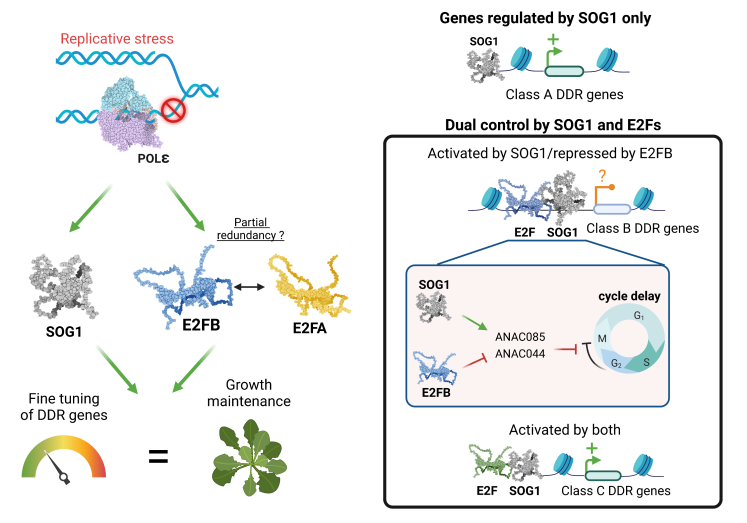E2Fs as novel players during replication stress
E2F transcription factors play complementary roles to fight replicative stress in Arabidopsis
In a study published in the journal Molecular Plant, the Chromosome Dynamics team at IPS2 demonstrated the involvement of E2F transcription factors, known to regulate the cell cycle, in the response to replicative stress. Replicative stress is a very common phenomenon in all proliferating cells, posing a permanent threat to the maintenance of genome integrity. The team has previously shown that the central player in the DNA damage response, the transcription factor SOG1, is not the only one involved in the replicative stress response. This new study shows that the proteins E2FA and E2FB share a large number of targets with SOG1. E2FB is required for the maintenance of cell proliferation under conditions of replicative stress, and acts partly antagonistically to SOG1 to finely regulate the level of activation of DNA damage response genes. By acting redundantly with E2FB, the E2FA protein could activate other genes involved in DNA repair under conditions of replicative stress. This work reveals a new regulatory network that plays a key role in maintaining genome integrity, which could be conserved in all plants.

26/09/2023
